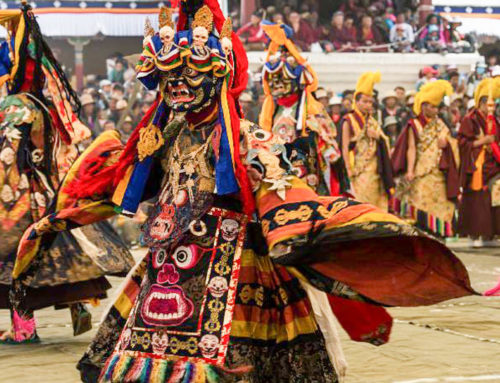
Saraswati: The Enigmatic Goddess of Wisdom and Arts
Saraswati, also known as Saraswati Devi or Yangchenma (དབྱངས་ཅན་མ།) in Tibetan, is a revered Indian goddess celebrated for her association with music, wisdom, and learning. This article delves into the multifaceted aspects of Saraswati, exploring her divine origins, her role in various spiritual traditions, and her profound influence on creativity and knowledge.
The Divine Essence of Saraswati
1. Emanation of Tara and Consort of Manjushri
Saraswati is not just an ordinary goddess; she is believed to be the embodiment of Tara, the compassionate goddess, and the consort of Manjushri, the Bodhisattva of Wisdom. This dual identity symbolizes her profound connection to wisdom and enlightenment.
2. Bestower of Awakened Eloquence
One of Saraswati’s most significant attributes is her ability to bestow awakened eloquence and special insight into the Buddha’s teachings. Her wisdom-bestowing nature deeply intertwines her with Manjushri, making her an essential figure in the spiritual world.
Saraswati’s Role in Creative Endeavors
3. Patron of the Arts and Music
Saraswati is celebrated as the patron of the arts, music, and creative expression. Artists, musicians, and performers often seek her blessings for inspiration and guidance in their creative endeavors.
4. Language, Literature, and Poetry
She is also revered as the goddess of language, literature, and poetry. Writers and poets invoke Saraswati’s name to enhance their creativity and eloquence, believing that her divine touch can elevate their work to new heights.
5. Philosophy and Knowledge
Philosophers and scholars venerate Saraswati for her association with wisdom and knowledge. She is believed to inspire deep thinking and a thirst for knowledge in those who seek her guidance.
Saraswati’s Various Forms
6. Vajravetali: The Wrathful Form
Saraswati’s divine presence extends to her wrathful form, Vajravetali or Dorje Rolangma. In this manifestation, she is the consort of Vajrabhairava, a fierce form of Manjushri. It is said that she revealed the Vajrabhairava Tantras to the renowned Indian master Lalitavajra, spreading this profound practice.
7. Je Tsongkhapa’s Meditational Deity
In the 14th century, the Tibetan master Je Tsongkhapa, founder of the Gelug school of Tibetan Buddhism, held Saraswati as his personal meditational deity. He composed a beautiful devotional poem titled “Prayer to Saraswati” based on his pure visions of her. Saraswati is believed to have frequently appeared to Je Tsongkhapa, offering him counsel and inspiration throughout his spiritual journey.
The Radiant Image of Saraswati
8. Peaceful and White in Color
Saraswati, often depicted as peaceful and white in color, embodies purity and serenity. Her serene appearance reflects her role as the bestower of wisdom and enlightenment.
9. The Utpala Flower and the Syllable HRIM
She is commonly depicted holding an utpala flower with a clear mirror marked with the syllable HRIM, emitting radiant light. This symbolism represents the clarity and illumination that Saraswati brings to the hearts and minds of her devotees.
10. The White Light of Knowledge
Saraswati’s countenance radiates with the white light of one hundred autumn full moons, signifying the brilliance and clarity she imparts to those who seek her blessings.
Conclusion of Saraswati
Saraswati, the goddess of music, wisdom, and learning, stands as a beacon of inspiration for creative individuals, scholars, and seekers of wisdom. Her multifaceted nature, from her peaceful form to her wrathful emanation, reflects the vastness of human potential. Embracing her as a source of guidance can lead to profound insights and creativity.
Frequently Asked Questions (FAQs) about Saraswati
1. How do I invoke Saraswati’s blessings for creative endeavors?
To seek Saraswati’s blessings for creativity, you can recite Saraswati mantras, engage in meditation, or simply offer sincere prayers with a pure heart and mind.
2. Is Saraswati worship limited to a specific religion or culture?
Saraswati’s influence transcends boundaries. While she is a prominent figure in Hinduism and Tibetan Buddhism, people from diverse backgrounds can venerate her for wisdom and creativity.
3. What is the significance of the syllable HRIM on Saraswati’s mirror?
The syllable HRIM represents the primordial sound of creation and is believed to enhance the power of Saraswati’s wisdom and knowledge bestowal.
4. Can Saraswati’s blessings help improve one’s academic pursuits?
Yes, invoking Saraswati is believed to enhance one’s academic abilities by promoting clarity, focus, and a thirst for knowledge.
5. How can I connect with Saraswati on a personal level?
Building a personal connection with Saraswati involves sincere devotion, regular prayers, and a commitment to the pursuit of knowledge and creativity. It’s a deeply personal journey that varies for each individual.
In conclusion, Saraswati’s influence transcends time and culture, making her a universal symbol of wisdom and creativity. Whether you are an artist, scholar, or seeker of knowledge, invoking Saraswati’s blessings can lead to profound insights and a deeper connection to your creative potential.









